Activists began raising concerns about the potential impact of electromagnetic fields from high-voltage power transmission lines, electrical wiring, cell phones, household appliances and other electronic devices in the 1980s.
Since then, there have been repeated warning signs that exposure to electromagnetic radiation stemming from modern electronics may cause cancer and other diseases.
In this blog post, I’ll explain what EMFs are and how they interact with the human body. We’ll also discuss the scientific evidence behind the claims that man-made EMFs can make us sick, and I’ll show you methods you can use to reduce your exposure to electromagnetic fields in your home or place of work.
What Are EMFs?
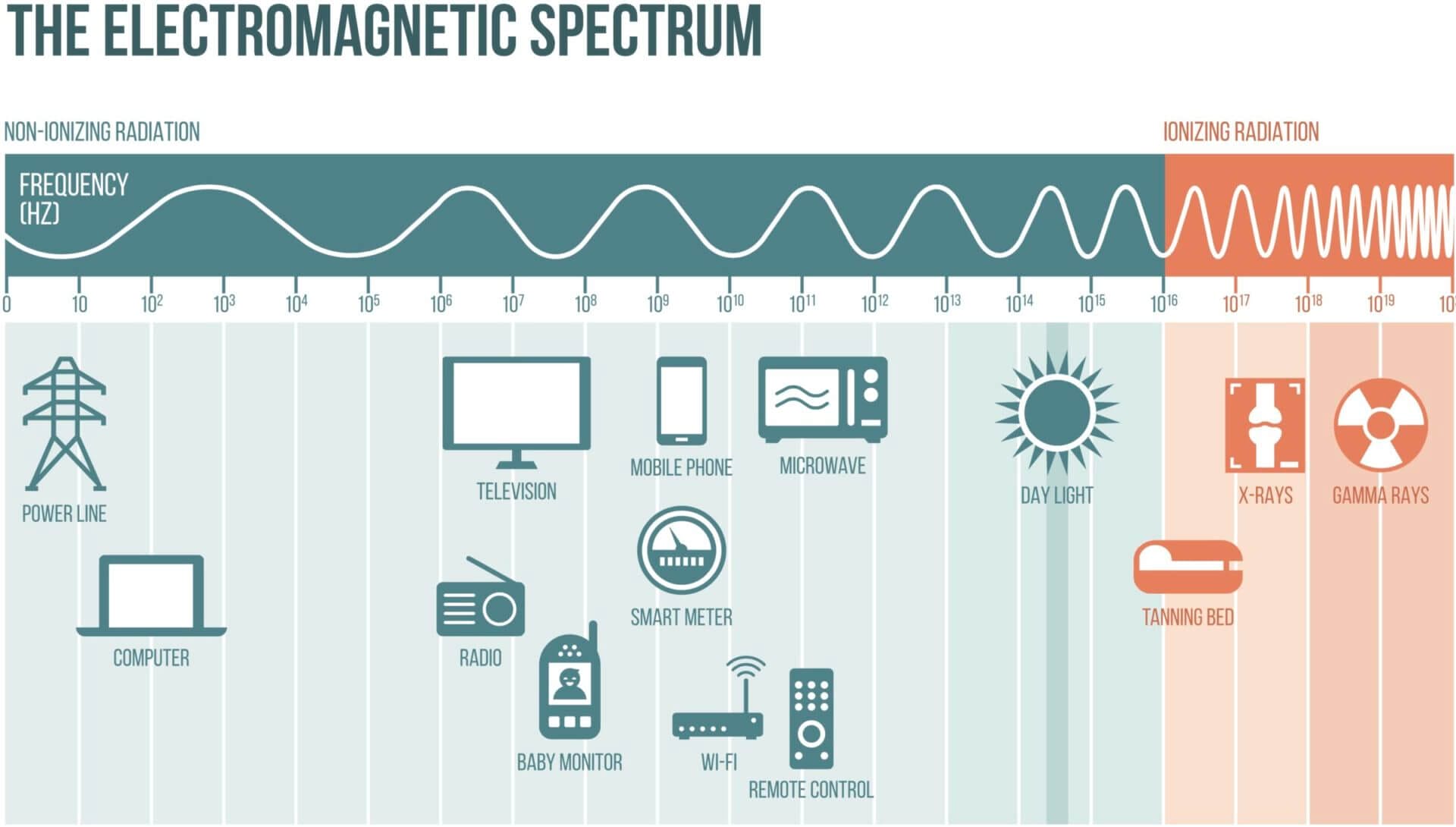
EMFs are electromagnetic fields that are produced by charged particles (such as atoms) with a surplus or deficit of electrons.
When charged particles move, they create a magnetic field. If you paid attention in physics class, you may remember that electricity can only exist when particles exchange (or steal) electrons.
So we can conclude that electricity and electronic devices cause electromagnetic fields!
Electromagnetic Fields in Nature
Electronic devices are one source of electromagnetic radiation (EMR). But they are not the only source. In fact, EMFs have existed since the beginning of the universe as we know it.
In other words, EMFs are an essential part of nature that we cannot get rid of or avoid.
In fact, our bodies constantly create low-frequency electromagnetic fields as part of the inner workings of cells. Remember, cells are made up of atoms that move around to do their job. That movement creates EMFs.
But does that mean EMFs are harmless and that we shouldn’t worry about them?
Not so fast!
Adverse Health Effects of Man-Made EMFs
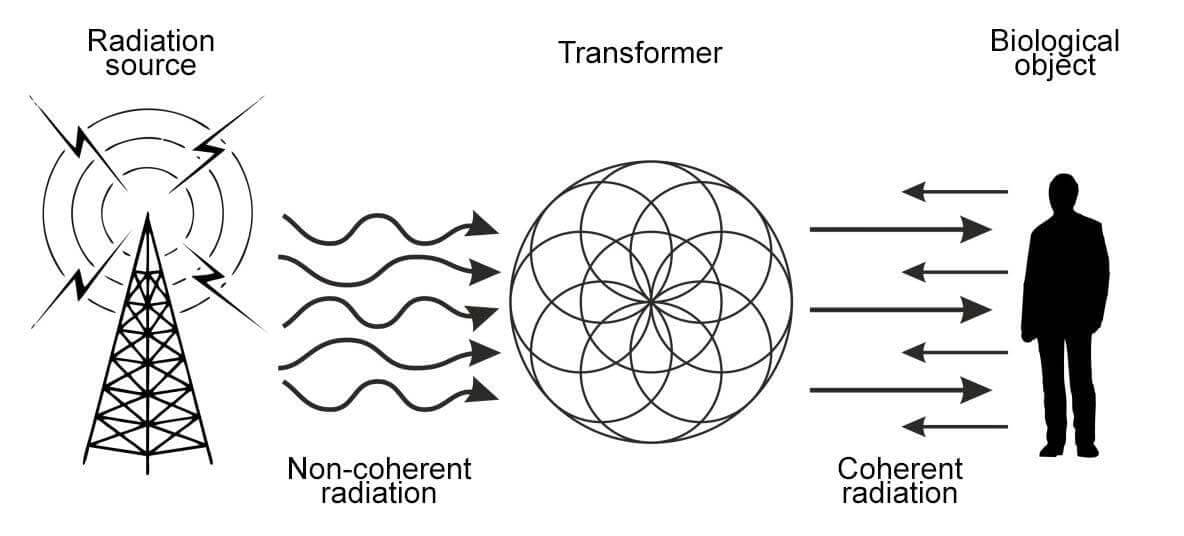
Electromagnetic fields can propagate as (electromagnetic) waves that carry energy. The amount of energy they can carry depends on their frequency. The higher the frequency, the more energy they can carry.
Some electromagnetic waves are so powerful that they can break molecular bonds. Gamma rays, microwaves and x-rays are three examples of waves that can break the bonds between molecules and cause harm to our bodies.
When molecular bonds are broken, charged particles (known as ions) can transfer from one atom to another. This is called ionizing radiation. (Note that while it’s true that microwaves can break molecular bonds, it is not a form of ionizing radiation.)
Another issue with ionizing radiation is that it can damage cells, break strands of DNA and meddle with DNA repair. That can lead to cell death and prevent DNA from replicating correctly. Scientists believe that the latter is a major contributor to the development of cancer. In other words, certain types of EMFs are considered carcinogens that can increase your cancer risk.
So what about EMFs (also known as non-ionizing radiation) caused by power lines, smart meters, Wi-Fi routers, cell phones and other electronic devices?
The short answer is that man-made electromagnetic radiation from consumer electronics and our modern infrastructure causes tissue heating. But it’s unclear how that affects human health in the long-term.
As with food, exercise and sleep, people are unique and may react differently (either positively or negatively) to certain types of EMFs. That said, there are several studies that clearly demonstrate changes in cell function during exposure to EMFs and EMR. The extent to which these changes cause long-term damage to public health (or if they cause any damage at all) is still unknown and subject to further studies.
However, it’s safe to say that we’re exposed to significantly more (and more types of) electromagnetic radiation than at any time in human history.
So you have two choices:
- Assume that man-made EMFs don’t carry any health risks until proven otherwise.
- Accept that humans have a track record of creating products that turn out to be detrimental to their health in the long run.
I’m in Camp #2 because I’ve watched the “let’s wait and see if it’s bad for our health” strategy fail with lead paint, plastic food containers, low-fat foods and vegetable oils (just to name a few).
From my perspective, many of the things that humans have invented to simplify or “improve” our lives, but which have shifted us away from how things work in nature, have caused health problems.
When it comes to EMFs, it might take decades or longer to prove whether or not they’re detrimental to our health at our current levels of exposure. And frankly, I don’t want to wait around to find out whether I’ve done damage to my body by failing to account for the potential risks they pose.
Symptoms of EMF Exposure
Whether or not you notice symptoms after having been exposed to electromagnetic radiation depends on various factors, including your sensitivity, the amount and length of exposure, and the intensity of the electromagnetic field.
While there’s still a lot we don’t know about the health impact of EMFs and the symptoms they can cause, the studies that have been conducted so far suggest that possible symptoms include:
- Headaches and migraines.
- Tremors (e.g., shaky hands).
- Dizziness.
- Cognitive dysfunction (e.g., memory loss or loss of concentration).
- Sleep disturbance.
Of course, those symptoms could all be caused by other lifestyle factors as well. But if you’ve ruled everything else out and are following most of the steps outlined in my healthy lifestyle guide, then EMFs could be the culprit.
You Can’t Avoid Electromagnetic Radiation

Even before the discovery of electricity, humans were exposed to EMFs from natural sources, such as the earth and the sun. Our bodies are accustomed to the wavelengths and intensities of everyday EMFs, and I’m not suggesting living in a Faraday cage or running around with a tin hat.
A Faraday cage is a container made of conducting material, such as wire mesh or metal plates, that shields whatever is enclosed from external electric fields. For example, when you’re inside your car and the car gets struck by lightning, you won’t be harmed because the metal chassis of the car redirects the electrical current into the ground. That’s the basic principle of a Faraday cage, named after its inventor Michael Faraday.
Instead, my recommendation is to reduce your exposure to unnatural EMFs — those created by electronic devices in your household, power lines and cell towers.
Determining Safe Levels of EMF Exposure
Considering that we don’t yet understand the long-term biological effects of EMF exposure, it’s impossible to say what levels of exposure are safe for the human body.
Nevertheless, the International Commission on Non-Ionizing Radiation Protection (ICNIRP) maintains international guidelines for EMF exposure. Additionally, certain countries have established “safe” levels for EMFs, as you can see in the table below.
Note that the table below does not contain data for the United States, which does not have any federal EMF safety standards.
| Magnetic (mG) | Electric (V/m) | RF (mW/m2) | |
| Russia | 100 | 500 | 100 |
| China | 1,000 | 4,000 | 400 |
| ICNIRP | 2,000 | 5,000 | 10,000 |
| IEEE | 9,040 | 5,000 | 10,000 |
As you can see, there is quite a spread between countries as far as “safe” levels are concerned. While some of that is due to the fact that European exposure limits (which align with ICNIRP) are based on the thermal impact of EMF on the human body, whereas the Russian and Chinese limits focus more on dose over extended exposure periods, it demonstrates that nobody really knows what level of EMF exposure is safe over time.
As indicated above, my take on safe EMF levels is simple: long-term exposure to (high levels of) EMFs that don’t occur in nature is likely to affect us in one way or another. As a result, I try to reduce my exposure to unnatural EMFs as much as I can without taking radical measures that would disrupt life as I know it.
How to Measure EMF Radiation
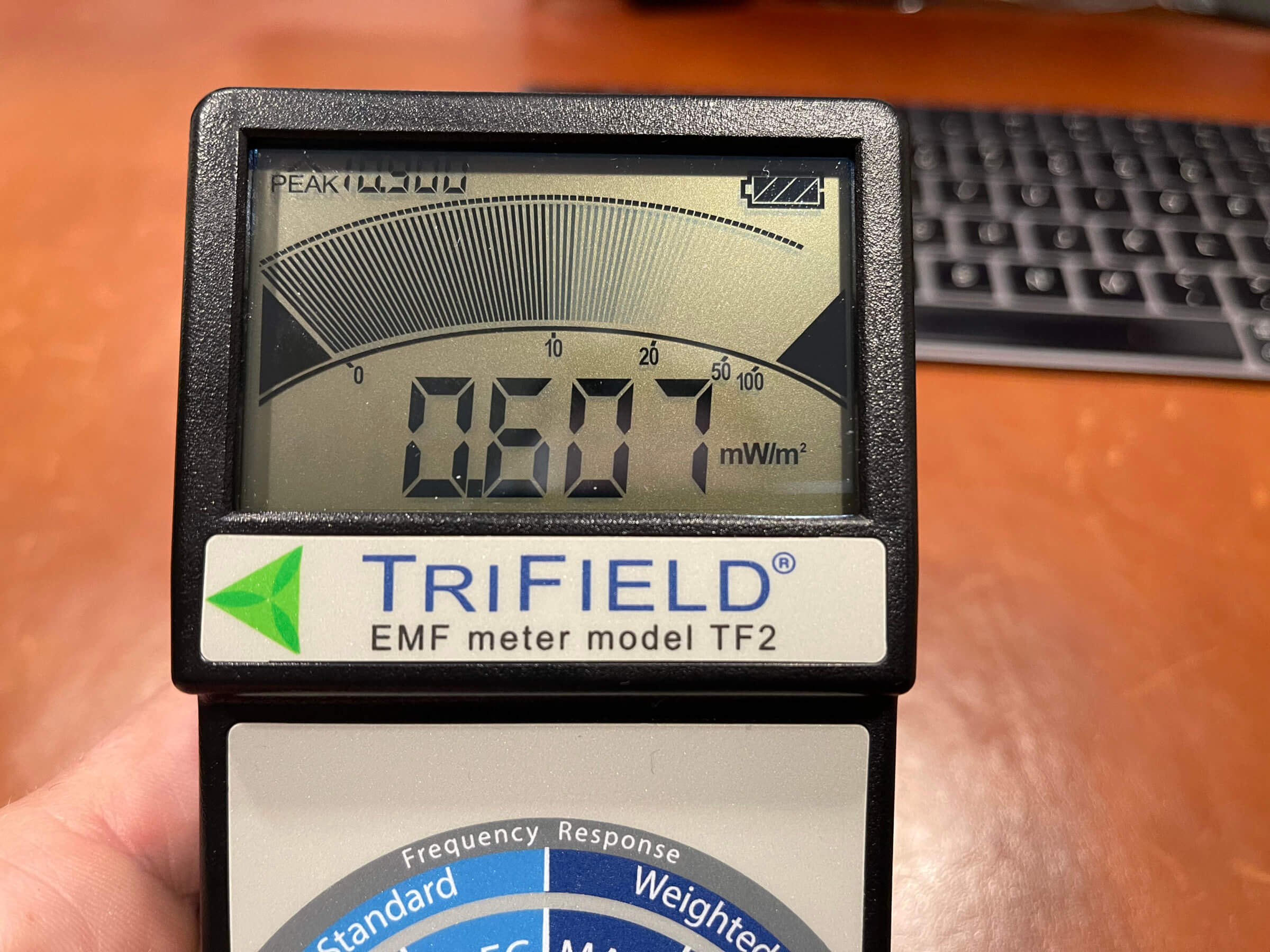
Before you can consider EMF mitigation strategies, you first need to figure out what your exposure to EMF radiation is in your home, office and other places where you spend significant amounts of time.
So how can you measure electromagnetic fields?
The easiest way is with an EMF meter like the TriField EMF meter model TF2 that I’ve been using for the past four weeks.
The TF2 can detect three types of EMF pollution, including AC magnetic, AC electric and RF/microwave. Additionally, it can respond to standard and weighted magnetic and electric frequencies.
“Standard” measures the strength of the field regardless of frequency (40Hz – 100kHz), while “weighted” measures only frequencies above 60Hz (which can create more electric current inside the human body).
According to the TF2’s manual, “at 60Hz, the body is receiving field pulses 60 times per second, while at 120Hz, the body is receiving twice the number of pulses, or 120 times per second, though the field remains the same.”
I’ve measured EMF pollution in every room of our home, and you can see the results in the table below. The numbers in bold indicate a reading above what TriField considers normal levels in a typical household, based on their research.
| Room | Magnetic | Electric | RF |
| Master BR | 0.4 mG | 22 V/m | 1.200 mW/m2 |
| Family Room | 1.5 mG | 12 V/m | 18.000 mW/m2 |
| Office | 10.6 mG | 48 V/m | 12.900 mW/m2 |
| Kids’ BR | 2.0 mG | 171 V/m | 3.600 mW/m2 |
| Guest BR | 0.3 mG | 2 V/m | 0.800 mW/m2 |
| Loft | 4 mG | 33 V/m | 8.000 mW/m2 |
As you can see, we’re exposed to increased levels of electromagnetic radiation in some areas of the house, due to the electric wiring (in the kids’ bunk beds), my previous desire to blanket the house in perfect Wi-Fi (RF radiation) and kitchen appliances. Seeing these numbers is what triggered me to look for ways to reduce our exposure.
Of course, all the readings above are spot readings, which means there could be higher or lower readings in other areas of the same room. I tried to capture readings from commonly occupied areas of each room and mark the highest ones. If you want to measure EMFs in your home, I recommend walking around with an EMF meter and taking note of the highest readings.
Seven Steps We’ve Taken to Reduce Our EMF Exposure at Home
These are the seven steps we’ve taken here at the Kummer household to reduce our EMF exposure.
- Use EMF-blocking stickers on our mobile phones.
- Turn off wireless access points and routers when we don’t need them, or reduce their power output in the configuration settings.
- Use headphones to make phone calls (wired headphones are best).
- Don’t charge our cell phones and smartwatches on our nightstands.
- Leverage EMF blocking fabrics.
- Cover our smart meter.
- Don’t place our laptops directly on our laps.
1. Use EMF-Blocking Stickers on Our Mobile Phones
I usually carry my iPhone in one of the front pockets of my pants. That exposes my private parts to electromagnetic radiation, which isn’t ideal. As a result, I decided to leverage an EMF-blocking sticker from WaveBlock (similar to the one I use on my AirPod Pros).
The sticker, called the WaveBlock iProtect, is attached on the back of my iPhone to redirect EMFs away from the back and towards the front. As a result, it doesn’t completely block EMFs, which would render my iPhone unusable; it just redirects them away from my body if I stick my phone into my pocket with the sticker facing my thighs.
It’s an incredibly elegant yet effective solution for reducing my EMF exposure without limiting the functionality of my device.
My wife uses a similar sticker to reduce her EMF exposure when she carries her iPhone in her purse or pants. The cool thing about the sticker is that you can’t even see it when using your phone with a case, like both my wife and I do.
If you have an iPhone and want to reduce its electromagnetic radiation using WaveBlock, make sure to use code KUMMER10 to get 10% off your purchase.
2. Turn Off Wireless Access Points

Considering that my family’s highest EMF exposure stems from radio frequencies, I suspected the five access points that provide Wi-Fi coverage in our home might be a major culprit.
As a result of the findings outlined in the table above, I decided to shut down some of our access points and reduce the signal strength of others.
The good news is that with fewer competing access points, I should also have fewer issues with interference and channel hopping. The latter might help with the reliability of my HomeKit devices, which has been a problem.
To take things even further, I wrote a script to disable all our access points at 10 p.m. and re-enable them at 4:55 a.m. (shortly before I start my day). Doing this should significantly reduce our exposure to RF radiation while we sleep.
Technically, what I’ve done is add scheduled tasks (on each of the UniFi switches that provide power to the access points via ethernet) that disable and re-enable the switch ports the APs are connected to. I wish UniFi had a configuration setting for this, but my workaround is good enough for now.
While taking the steps I outlined above helps reduce our EMF exposure at night, they don’t help much during the day. So we needed something that could mitigate the harmful effects of EMFs without requiring the removal of the offending devices. The solution was EMF modulation technology (see #4 in the list, below).
On a side note, I’ve always made fun of my parents for turning off their internet modem at night. They do it to conserve energy, not to reduce their exposure to EMFs. But the more I learn about the subject, the more I think it’s a smart move.
3. Use Headphones to Make Phone Calls
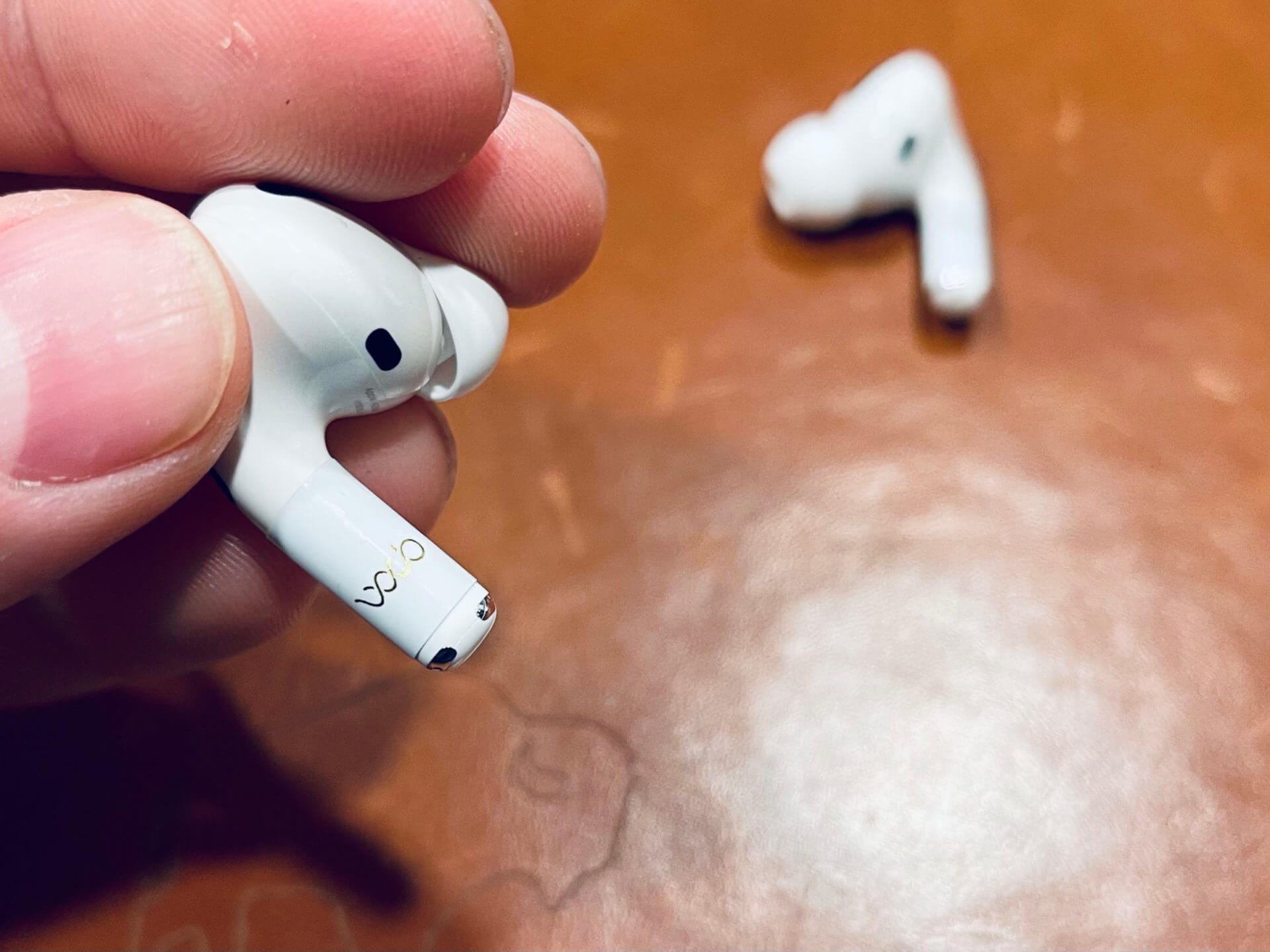
Many studies have investigated the potential association between mobile phone use and certain types of brain cancer. The International Agency for Research on Cancer, part of the WHO, even declared EMFs as “possibly carcinogenic to humans” based on an increased risk for glioma, a type of brain cancer.
Considering that wireless phones have been around for decades, you may think that we should know for sure by now whether or not they actually increase the risk of cancer.
Unfortunately, we do not. However, a systematic review and meta-analysis on mobile phone use and glioma risk concluded that “there was a significant positive association between long-term mobile phone use (minimum, 10 years) and glioma. And there was a significant positive association between long-term ipsilateral mobile phone use and the risk of glioma. Long-term mobile phone use was associated with 2.22 times greater odds of low-grade glioma occurrence.”
The authors of this meta-analysis also concluded that “current evidence is of poor quality and limited quantity. It is therefore necessary to conduct large sample, high-quality research or better characterization of any potential association between long-term ipsilateral mobile phone use and glioma risk.”
Why we haven’t designed better studies with larger sample sizes — despite strong correlations of certain types of EMFs and brain cancer — is, quite frankly, beyond me.
If I had to guess, it’s because such studies require significant funding and the two biggest sources of money for large studies are governments and private industry. I don’t think either entity wants to take the risk of discovering that cell phone usage might be bad for our health.
Can you imagine the disruption to everyday life such findings would cause?
Regardless of the hard scientific evidence, it’s a fact that your mobile phone creates the strongest electromagnetic fields during phone calls. As a result, I advise you to use headphones instead of keeping the phone close to your head, where the EMFs can alter brain cell activity.
Of course, wired headphones are best because they don’t require Bluetooth, another source of electromagnetic radiation. That said, all of the headphones I own are wireless, and I’ll continue using them because (based on my testing) my AirPods create a much weaker EMF than my iPhone.
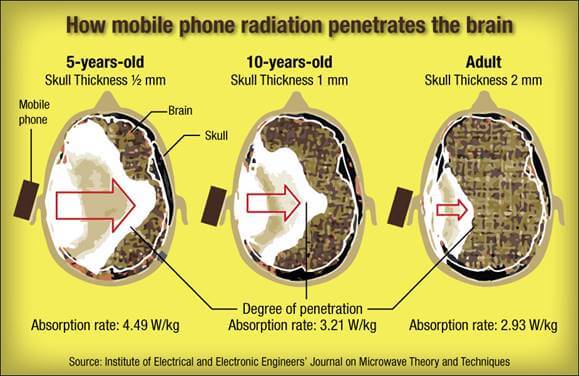
So I would rather have my AirPods close to my head than my phone.
Right after publishing this article, I started using EMF-blocking stickers for my AirPods Pro from Wave Block. At first, I was afraid these stickers would interfere with the connectivity between the AirPods and the device they’re paired to. But after several weeks of almost daily use I can attest that they work flawlessly!
Plus, I’ve seen the official test report from TÜV SÜD (a highly regarded German testing facility) that concluded that Wave Block’s stickers reduce the electromagnetic radiation of AirPods by over 95%. Unfortunately, I can’t share the full report with you here because it’s confidential and under NDA. But I’m certain that if you ask Wave Block, they’ll make it available to you.
If you’d like to give Wave Block a try, make sure to use code KUMMER15 for 15% off.
4. Don’t Charge Your Cell Phone and Smartwatch on Your Nightstand
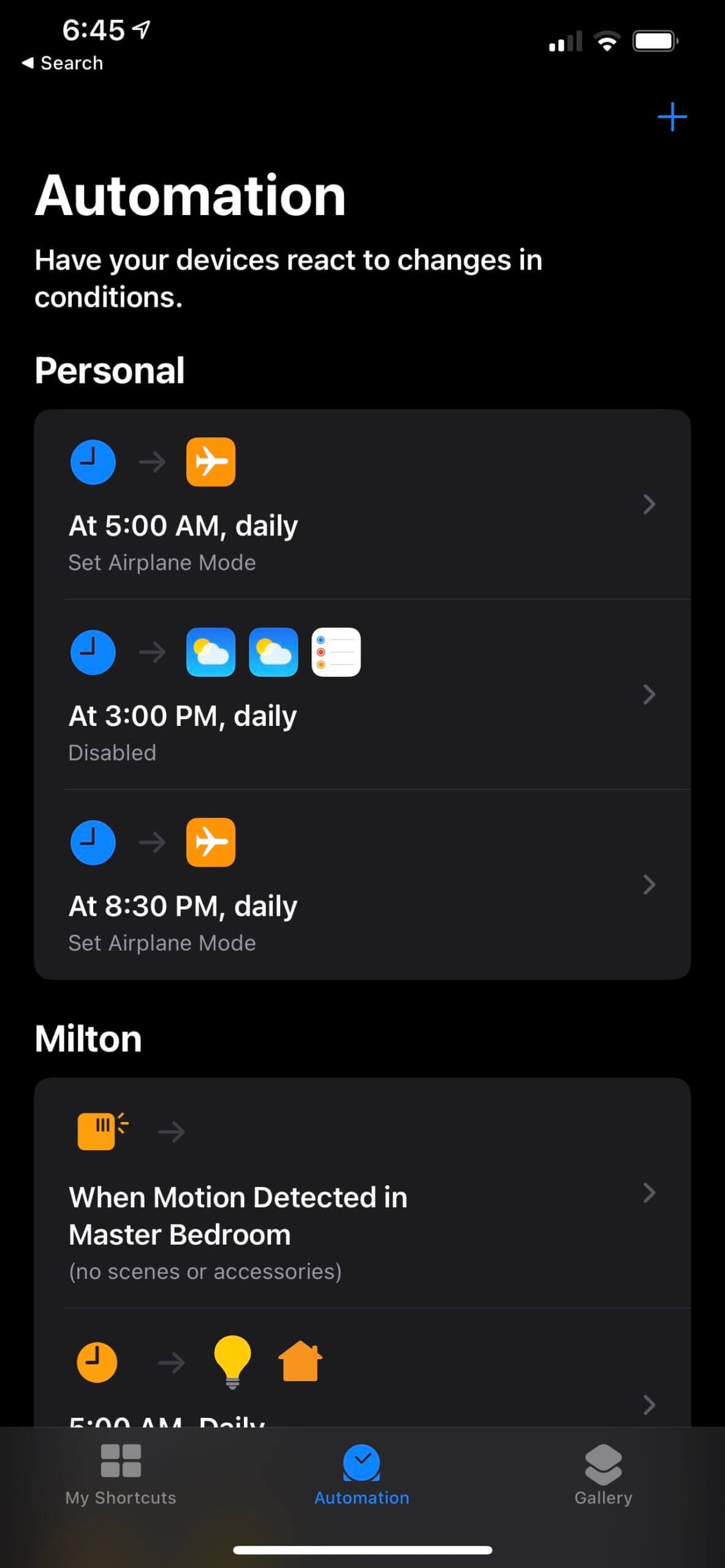

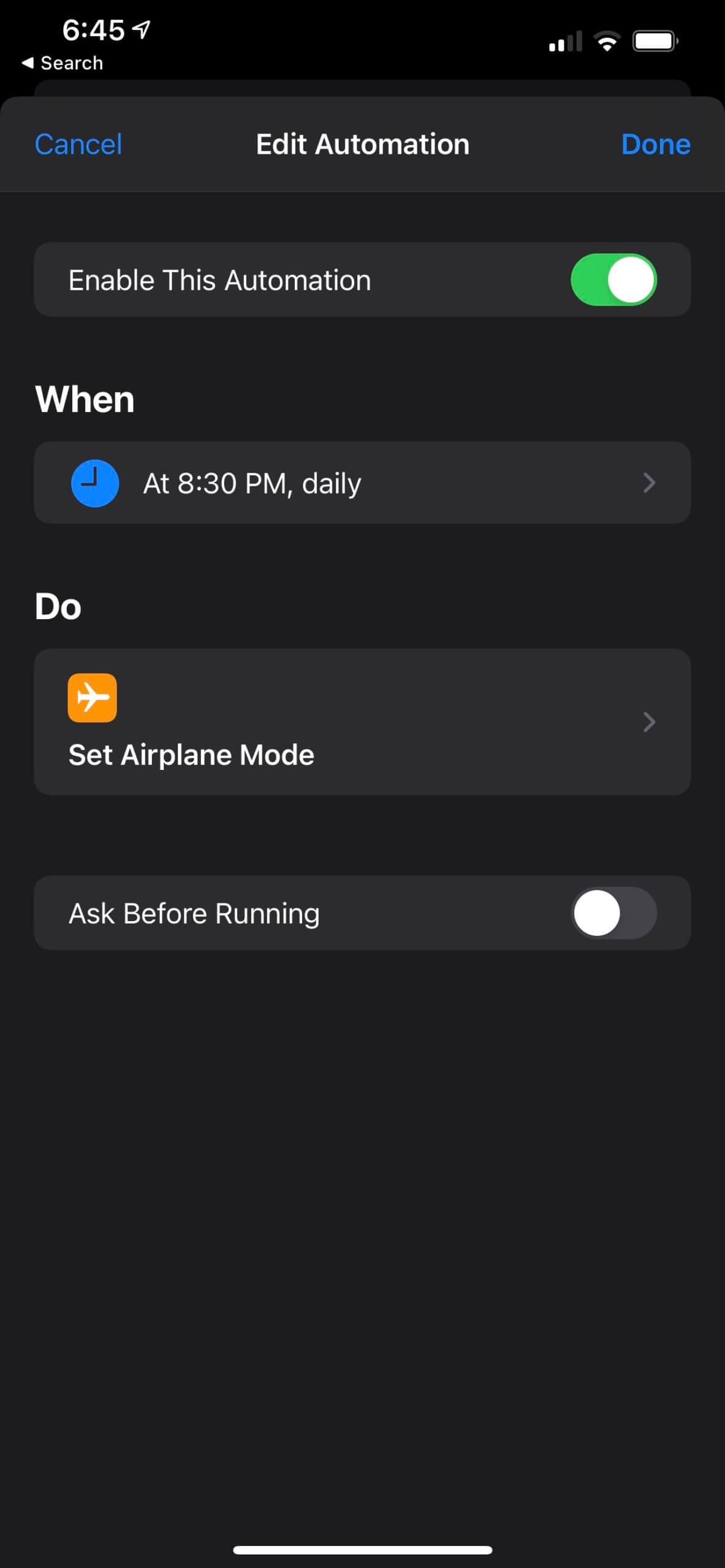
Most of us charge our cell phones, smartwatches and the other electronics we use every day on our nightstand, because doing so is convenient. Others even put their phones under their pillow before they fall asleep, after scrolling through social media before going to bed. My wife has been known to do so on occasion.
I encourage you not to do that. Instead, keep your devices as far away from your body at night as possible. You certainly don’t want to sleep with your head on top of a cell phone (even if you’re not actively using cellular connectivity).
If you must keep your phone close by at night, I recommend enabling airplane mode to disable cellular, Wi-Fi and Bluetooth connectivity. If that’s not possible — maybe because you’re on call and have to be reachable at any time — I recommend placing your phone a few feet away from your bed.
I created a Siri Shortcut that automatically enables airplane mode at 8:30 p.m. and disables it at 5 a.m., so I can’t forget to do so. If you have an iPhone running a newer version of iOS, just download and open the Shortcuts app, go to Automations (bottom icon) and create two automations as shown in the screenshots above.
5. Leverage EMF Blocking Fabrics

Blocking electromagnetic radiation is often disruptive, and thus not feasible on a broad scale. For example, using EMF-blocking paint in every room of your house would effectively prevent you from using your cellphone.
However, there are some cases where blocking out or significantly reducing EMFs makes perfect sense. For example, using EMF-blocking blankets or bed sheets can quickly reduce your EMF exposure without negatively impacting your life.
That’s why I’ve gotten a special shielding blanket that protects against high and low frequency radiation. The fabric the blanket is made out of contains a combination of soft cotton, polyester and steel threads that physically block certain electromagnetic frequencies.
In comparison to the Aires devices I mention below, the EMF protection blanket I’m using has been lab-tested to effectively reduce high-frequency electromagnetic radiation by 35 decibels.
Check out this spec sheet for more information.
I use this blanket on top of my sheets to reduce my exposure to EMFs while sleeping. But it’s worth noting that shielding blankets like this one don’t block EMFs completely; they merely reduce their strength and potency.
I should also mention that EMR Shielding Solutions (EMRSS), the company that makes this blanket, offers a variety of other EMF mitigation solutions, including sheet sets, bed canopies, apparel, EMF-blocking paint and much more. So I encourage you to check out their online store and see what solution works best for you.
When I first came across EMRSS, I was considering hanging a canopy over our entire bed for maximum protection. But my wife wasn’t as enthusiastic about that idea as I was. So I settled on a blanket, and I think it’s a great compromise because it covers most of my body while I’m asleep. Plus, it’s super comfortable and soft, despite the steel threads.
If you want to give an EMF protection blanket (or any other product from EMRSS) a try, make sure to use code MICHAELKUMMER and get 5% off your purchase.
6. Cover Your Smart Meter
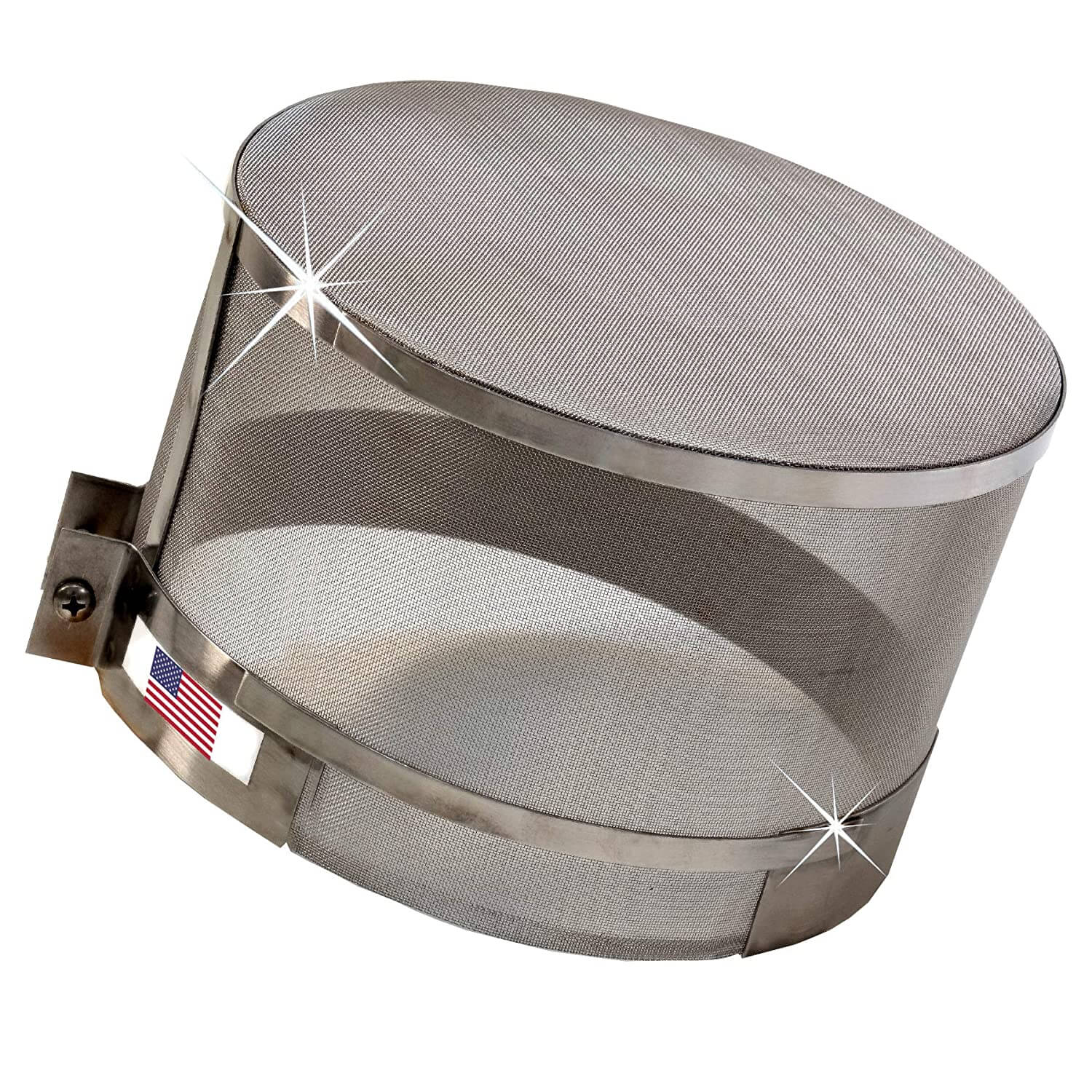
A smart meter is an electronic device that’s often located on the outside of an exterior wall and that records, among other things, your power consumption (reporting it back to the utility company).
But as with wireless access points, smart meters emit radiofrequency (RF) signals that contribute to the overall EMF pollution in your home.
One easy way to mitigate the risk originating from smart meters is to cover them with an EMF shield that acts like a Faraday cage. You can find them on Amazon for less than $40.
7. Don’t Place Your Laptop Directly on Your Lap
Many people place laptops on their laps, while others avoid doing that because of the heat such devices produce. While heat is certainly an inconvenience, think about the electromagnetic radiation roasting your (reproductive) organs while you have the laptop in your lap.
That’s why I recommend getting a laptop pad that has EMF-blocking properties, such as the ones you can find on Amazon.
I usually don’t have my MacBook on my lap because I prefer working on a stable surface, such as a table. That’s why I use Lifetune instead of a laptop pad.
Frequently Asked Questions
As far as I know, there are no absolute safe levels that the United States has established for EMFs. However, based on the existing scientific evidence, there haven’t been any harmful effects associated with the levels listed below:
– 3mG standard magnetic or 5mG weighted magnetic.
– 50 V/m Standard or Weighted electric.
– 0.200 mW/m2 Standard or 1.000 mW/m2 peak measurement.
As you can see in the table of EMF readings from around my house, I didn’t find a spot in our home that had magnetic fields above these threshold levels. Additionally, I didn’t record any electric radiation above 50 V/m, unless I held the meter right next to a power outlet or light switch.
The reason why I measured relatively high electric radiation in our kids’ bunk beds is because the previous owner of the house ran electric wires inside the framing of the bunk beds so that each kid has their own light. To mitigate this issue, we just moved the kids’ pillows to the other side of the bed, so their head (and pillow) wouldn’t be close to the wiring.
As far as RF radiation is concerned, you’re more likely to reach or surpass the limits mentioned above. Being close to a single wireless access point might already be enough to reach potentially unhealthy levels. We have several access points and dozens of Wi-Fi-enabled devices in our home, and I’ve recorded significantly higher levels at various spots in our home than what some consider to be “safe levels.”
Any electric device is a potential source of magnetic fields. The most common sources include power lines, appliances, wiring in walls and motors.
As the name implies, any electric device is a potential source of electric fields. The most common sources include fluorescent lights, wall outlets, wiring and electrical switches.
The most common sources of RF radiation are cell phones, Wi-Fi routers, microwave ovens, radio/TV stations and smart meters.
Usually, the impact of electromagnetic radiation declines with distance. As a result, a nearby cell phone tower is likely to be less problematic than talking on a cell phone while holding the device close to your head.
I haven’t seen any evidence to suggest living near power lines is immediately life-threatening. However, depending on how close you live to them and how much voltage they carry, you might be exposed to electromagnetic radiation.
If you live near power lines, I recommend getting an EMF meter and measuring your exposure levels. Depending on your findings, you can decide whether or not taking action (such as installing an EMF mitigation device) is warranted.
Dirty electricity is a term that describes environmental exposure to high-frequency voltage transients (HFVT). In other words, it’s the electromagnetic pollution caused by electric fields.
Yes, any electronic gadget, including baby monitors, is a source of electromagnetic frequencies. As a result, I recommend placing them as far away from your baby’s crib as feasible.
Absolutely! Qi chargers use electromagnetic fields to transfer energy. In a way, they’re the perfect example of how powerful wireless radiation can be (i.e., it can charge your cell phone).
Yes! Much like baby monitors and other wireless devices, cordless phones emit EMFs and I don’t recommend using them without a (wired) headset.
Blue light is part of the electromagnetic spectrum, wedged between ionizing radiation and micro/radio waves. As a result, I consider blue light electromagnetic radiation. The thing with blue light is that we need to expose ourselves to it while the sun is out but avoid exposure while the sun is down.
Blocking EMFs is an excellent way to reduce your exposure. Just keep in mind that many EMF blockers negatively impact the operation of the blocked device. For example, putting a Faraday cage over your Wi-Fi router effectively disables its Wi-Fi antennas.
The more practical approach is to either harmonize the EMFs or use a radiation shield to protect certain body parts (without disabling the whole device).
I don’t think EMF-blocking phone cases are a great solution for reducing EMF exposure from cell phones. If you block all EMFs originating from a cell phone, the device won’t be able to maintain a cellular, Bluetooth or Wi-Fi connection.
I think the better approach is to use wired headphones to be able to keep the phone away from your body while making phone calls. That means not having the phone in your pants pocket while making calls, as it might cause tissue heating in areas you don’t want heated.
Yes, it does — and I think it’s a great option for new construction, or if you had planned to paint the interior of your home anyway. Just keep in mind that any rooms painted with EMF blocking paint will likely have very poor Wi-Fi and cellular reception (or none at all). So I’d use this paint for bedrooms, but not for areas of the house that require wireless connectivity.
Check out EMRSS’s online store for EMF paint options.
Yes, the TriField TF2 can detect pollution from fourth and fifth generation radio frequency bandwidths (600 MHz to 6 GHz). It doesn’t detect radiation from bandwidths between 24 to 86 GHz, which might be in use in the future.
You can certainly measure the impact of EMF blocking devices using an EMF meter. For example, if you cover your smart meter with a Faraday cage, you should see significantly lower EMF readings as a result.
However, you won’t be able to measure the impact of devices such as Lifetune because they don’t block EMFs. Instead, they change the structure of the radiation to be more in line with naturally-occurring EMFs. To measure their impact you’d need to use encephalography.
Wrap-Up: Why You Should Take EMF Protection Seriously
Based on all the scientific evidence I’ve seen so far, it’s not clear if or how electromagnetic fields and electromagnetic radiation may impact our health and well-being in the long-run.
Most of the studies that I’ve seen are flawed and were not properly designed. That makes having a fact-based discussion about the potentially harmful impact of EMFs on our health almost impossible.
However, there is sufficient evidence that EMFs impact us on a cellular level by modulating the currents in our bodies and causing tissue heating.
In my opinion, assuming that man-made EMFs do not cause harm to our health is foolish. Humans have made this assumption in the past, and it tends to not end well.
Because of that fact, I’ve decided to pursue a practical approach to dealing with EMFs (similar to how I deal with environmental toxins): I first assess my exposure, and then I take steps to remove the worst offenders.
I also implement mitigation strategies that are cost-effective and that further reduce my exposure, including turning off unused devices and experimenting with EMF shielding products such as the ones from EMRSS.
From there, I continue doing research and I keep adapting my strategy as I learn more.
Now that you know about the potential dangers of EMFs, what are you going to do about them? Let me know by leaving a comment below!

Michael Kummer is a healthy living enthusiast and CrossFit athlete whose goal is to help people achieve optimal health by bridging the gap between ancestral living and the demands of modern society.



Hello Michael,
When you wear the Apple Watch or Oura ring do you always keep them on airplane mode (even during the day)?
Thanks.
Hey Mateo,
I don’t use the Apple Watch anymore but while I had one, it was only in Airplane mode at night. However, I discovered that BT cannot be disabled on the Apple Watch (not even in AP mode) and so I stopped using it. I also don’t use the Oura ring anymore (I switched to Ultrahuman) but I keep those in AP mode only at night (not during the day).
Cheers,
Michael
Hey have you ever tried covering your whoop sensor with tin foil and see if it emits less emf? lol , going to give it a go when i get it fri or monday
I have not but I sleep with an EMF-blocking blanket. So as long as my arms are under the blanket, my brain isn’t exposed to EMFs emitted by WHOOP :)
Thats a good call, ya , using tin foil didnt work out so well . I am crossing my fingers for the 5.0 , so far rumors have a sept event ,but we will see how that panes out. Information comes from past employees that got axed from the cuts.
Hi
Few years ago you mentioned you would check a contact at whoop if airplane mode was in the cards for future updates and since its been a few years and it isnt, is that answer likely not happening?
Hey James,
no, I don’t think they’ll add airplane mode. So I stopped wearing WHOOP.
Hello, I’m interested in getting a pair of Airpods Pro 2. Did the waveblock help? were you able to measure the emf and did it improve?
Thanks,
Fred
Hey Fred,
You can’t measure their effectiveness at home. But third-party labs performed those tests and I trust in their findings. See https://www.waveblock.com/pages/about-us?view=lab-reports&ose=false#
Does PEMF therapy contribute or help counteract EMF exposure?? Or is it an apple to oranges thing?
I don’t have any hands-on experience with PEMF therapy but keep in mind that not all EMFs are bad. After all, we’re exposed to natural EMFs all the time. Plus, PEMF therapy limits your exposure to a few minutes or so. That’s much less of an issue than 24/7 exposure from your WiFi router, cell phone tower etc.
Hi, thank y for the info in y page. I plan to buy some sleep tracking device. I decided between oura and whoop. Just when I decided on whoop after a long research, I found out that whoop did not have airplane mode. I try to watch the EMF mainly in terms of sleep. Can EMF from whoop be compared to anything? How strong is EMF from whoop? It don’t look like whoop team plans to add this airplane mode, or do they? Do you see the EMFs produced by Whoop as a problem?
Hey Tom!
I definitely wish WHOOP would add airplane mode to its strap and I’ll follow up with my contact there to see if that’s on the roadmap. Based on the readings with my Trifield meter, WHOOP produces radiation at or below the safe levels (with BT on my iPhone turned off).
So I don’t see those levels as a major concern but I’d prefer airplane mode nonetheless.
Hello Michael,
Just found your site and appreciate your pragmatic and well-covered discussion on the matter. Being a functional Nutritionist I truly believe all things matter, however I am by no means tech savvy. I know you said that cell towers also emit these frequencies, do you by chance know the difference. My family and I all noticed a steep decline in our energy but have not been able to find any correlating changes other than the switch in our area from 4G to 5G (I think thats the one…). This is what led me down this rabbit hole and wow, what I didn’t know. I will certainly be making some changes to our habits. Thank you again for the understandable information!
Much gratitude,
Stanton
You’re most welcome!
PS: Apologies for the late reply. Your comment got accidentally deleted by my anti-spam plugin and I just found out about it.
Hi Michael,
Thanks for a great discussion of EMF!
Any updated thoughts on the WaveBlock stickers for your AirPods? Do you feel that your AirPods still work, even with the stickers? I’d also be particularly interested to know whether the stickers do decrease the EMF measurement picked up by your TriField meter.
Any additional thoughts you have on WaveBlock would be much appreciated!
Hi Sidney,
I have installed the WaveBlock stickers and, so far, I haven’t any negative impact on the AirPods’ performance. I haven’t done any tests with my meter yet but I have planned on updating the article in the next two weeks or so because I’m also testing an EMF-blocking blanket.
Stay tuned!
Cheers,
Michael
Thanks for replying—I look forward to reading the article updates!
Hey Sidney,
I just updated the article to include more feedback on Wave Block!
Cheers,
Michael
Do you still wear an Apple Watch or Whoop for sleep tracking? If so, are there any steps you take for less radiation
Hi Bublik,
I only wear my WHOOP but not my Apple Watch because the latter is a poor sleep tracker. I’ve been experimenting with different ways to reduce radiation but haven’t found anything foolproof.
I’m hoping that WHOOP will gain an airplane mode feature in the future, like the Oura ring has.
Cheers,
Michael
Hi Michael – I found your blog while searching for reviews of the Eight Sleep pod and have found many insightful posts that have been helpful. I’m considering buying the Eight Sleep Pod Pro Max, and am wondering about EMF with respect to the technology in the bed. I’m assuming said technology emits EMF, so wondering what you can tell me about the potential dangers of sleeping on it.
Thanks,
Rob
Hey Rob,
the Eight Sleep cover doesn’t emit EMFs, only the hub does!
PS: Apologies for the late reply. Your comment got accidentally deleted by my anti-spam plugin and I just found out about it.
Aires Tech claims that its technology is patented. However, the alleged patents turn out to be design patents, which protect an aesthetic impression (the Aires devices look very nice indeed), but not a technical effect. I agree, that EMF of all devices we have in our homes and carry with us could be problem, and that we must hope that turns out to be not the case at the end, since our way of living of today relies on these devices. However, EMF mitigation devices like the Aires devices certainly will be no solution but have as only purpose to pull money out of the peoples pockets. The Aires tech papers appear to be bullshit on a high level. I do not know whether and how EMF radiation passing directly through an Aires device is changed or attenuated. However, the Aires device attached to your iPhone is much too small to have any noticeably effect on the radiation emitted by the antenna arrangement of your iPhone. That a device carried about the neck could help against radiation coming from all directions is obviously complete nonsense. I had thought that you were more critical on indeed astonishing claims of this company.
Hi Volker,
I’m also skeptical of Aires and updated my wording in the article right after publishing it to reflect that (caches might not have cleared yet, so give it maybe a day or so). I do agree that a lot of the information the company has put out there is confusing and hard to understand (that’s a red flag).
Regarding their patents, they do have patents related to their core functionality but they only filed those in Russia but not in the US or Canada (like their design patents). See https://new.fips.ru/iiss/document.xhtml?faces-redirect=true&id=17ed1c397927f76d19f84094eafbd1f7, for example.
Since the math and science are over my head, I’m hoping that a physicist will chime in and explain if their data is valid or not.